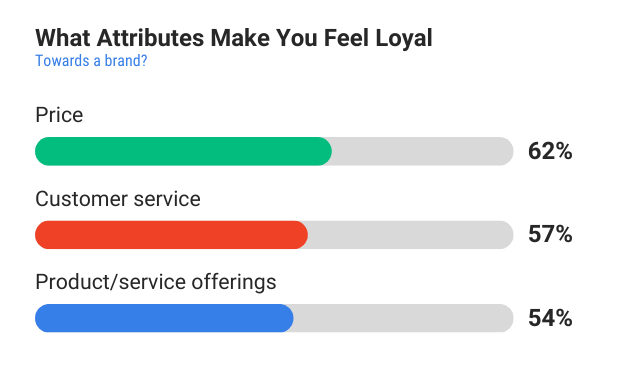When operating a business, you’re bound to make mistakes or run into a dissatisfied client at one point. However, we believe that how a company manages a damaged customer relationship holds just as much weight as the number of rave reviews they have. According to the data below, it’s the second leading factor in customer loyalty. Resolving mistakes made on your end gives you a chance to keep a customer and shows the other party that you value them and genuinely care for their needs. So don’t walk away from a client when things get tough; here is a guide on how to save your customer relationship when your company falls short.

Get to the bottom of your customer’s biggest frustrations & pain points.
Although this part may be tough, it’s vital to initiate a conversation with your customer or client about what went wrong in the transaction. When you take the time to have this conversation, you have the advantage of receiving significant feedback about your company that can help you make the necessary improvements.
“We see our customers as invited guests to a party, and we are the hosts. It’s our job every day to make every important aspect of the customer experience a little bit better.” –Jeff Bezos
Provide a sincere apology.
There is so much power in a meaningful, well-thought-out apology. Typically when individuals voice their dissatisfactions, they want an acknowledgment of the situation and for the other party to understand how they feel. Be sure to avoid delivering another empty apology by including the following elements.
Acknowledgment: Let your client or customer know that you’re aware of the error that has been made and that their feelings regarding the situation are valid.
Responsibility: Let the other party know that you were wrong and mishandled the situation at hand. This lets the customer know that you are not simply asking for forgiveness because they have bought the complaint to you, but you can actually understand that you are at fault.
Expression of Regret: Let the customer know that whatever happened between you two is not how you intended nor plan to continue to run your business.
Present an action that ameliorates the damage done to the customer.
This step makes the biggest difference in whether or not this client returns or not. It’s not enough to simply apologize if there is damage done because, frankly, an apology doesn’t erase the past. If you truly want the customer relationship to be saved, brainstorming with other members of your team on how you can fix the damage is your best plan of action.
Make an effort to deliver beyond the initial agreement.
Delivering beyond your initial agreement with your customer or client will be the cherry on top, further emphasizing how much you do actually care about not only your reputation as a company but their individual experience with you. Whatever you can manage to offer the customer to make them feel cared for and further acknowledge will almost guarantee you’ll be back in their good graces.
Renew trust in the relationship by creating a plan that prevents the incident from happening again.
Even after you’ve made restitution with your client, you’ll want to make some internal adjustments to be sure that the incident doesn’t repeat itself in another transaction. Take some time to regroup with your team so you can identify the flaw in your process and pivot accordingly.
“Your most unhappy customers are your greatest source of learning.” –Bill Gates
Consider these tips when you find yourself in a situation where your company’s reputation could possibly be in jeopardy, and you’ll be sure to see a difference in the outcome. Remember, people will always remember how you’ve made them feel, so make the effort to ensure that anyone you do business with feels comfortable, acknowledged, and satisfied.
Don’t forget to visit us on our other platforms for more valuable resources that will help you to run your firm better or find the right firm for you! Follow us on Instagram, Facebook, and LinkedIn today. Also, check out other articles that can help you better your business like this piece from our principles sharing what they’ve learned in the past 20 years.